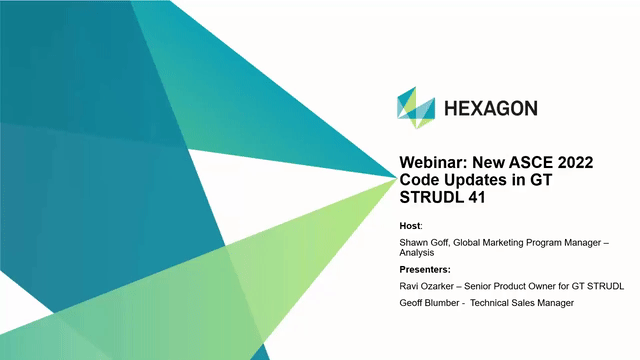New ASCE 2022 Code Updates in GT STRUDL 41

Change is the one constant in the design process and we must adapt. For given codes, engineers often excel at leveraging tech to simplify and standardize load cases and combinations. However, with recent updated codes in place, old templates may no longer be applicable. This requires engineers to re-work existing templates and seed files in order to adjust to these changes.
What sets ASCE 7-22 apart from other codes? It’s comprehensive approach to design and preparation for a wide range of hazards, as well as its considerable focus on resilience and sustainability. It considers not only the expected loads and forces that a structure may experience, but also the potential for unexpected events and the vital need to adapt while withstanding ever-changing conditions over time.
Discover how GT STRUDL can help you avoid critical mistakes in your engineering workflow.
Take a look at the new 2022 ASCE 7-22 code updates in GT STRUDL 41, including:
- Changes to the base loads in ASCE 7-22
- The effects of those changes on your load combinations
- An understanding of how those changes affect different types of structures
- How GT STRUDL can help reduce the complexity of properly applying the 7-22 code
Meet the Presenters
![]()
Geoff Blumber
Technical Sales Manager, Hexagon
Geoff Blumber manages the Schematics, 3D Design and Analysis Solutions group, aligning people and resources to deliver the right solutions to the right people at the right time. He has held varied positions in structural engineering and construction management over his career, although solution consulting, direct field sales and sales management within the power and plant industries has been his primary focus the last fifteen years. Geoff holds a Bachelor’s degree in Architectural Engineering from the University of Texas at Austin.
![]()
Ravi Ozarker, PMP, P.E., P. Eng
GT STRUDL Product Owner, Hexagon
As a structural engineer and engineering software developer for the past 20 years, Ravi has worked for a variety of organizations in different roles, including consulting engineering, government agencies, software companies, EPCs, and more. Ravi has a Bachelor of Applied Science in Civil Engineering from the University of Waterloo, Canada, and is a licensed Professional Engineer in Texas and Ontario.